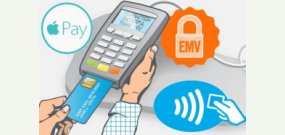All improvement and innovation is brought about because of competition. Technical improvements, like cellular telephones, grew because competition forced the wireless phone manufacturers and carriers to improve or vanish. The same thing probably happens to you in your business. Something changes in your competitive landscape, the technology in your business is different, a new store opens, or the demographics in your community changes and this means you must change your business and fast.
Your competition causes you to take action. You have to study your completion and anything they do that is better than you, you must improve on. If you understand your competition and evaluate your business objectively, your business will improve and you will be a leader and not a follower. After the improving and redesigning, maintaining can be accomplished through quality Point of Sale (POS) software. Don’t complain about your competitor, but do something about it and kick their rear.





